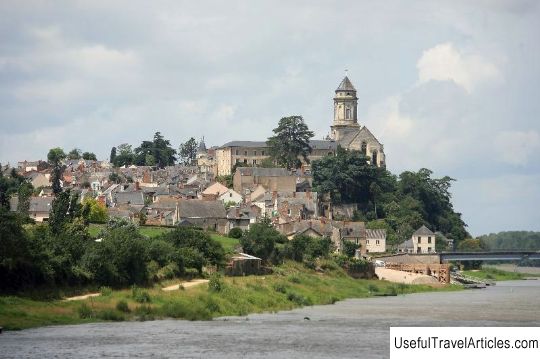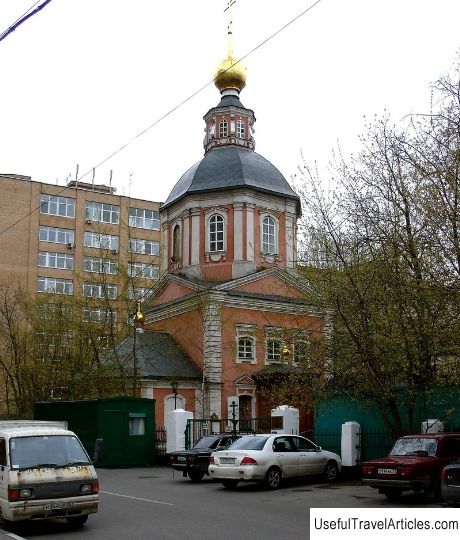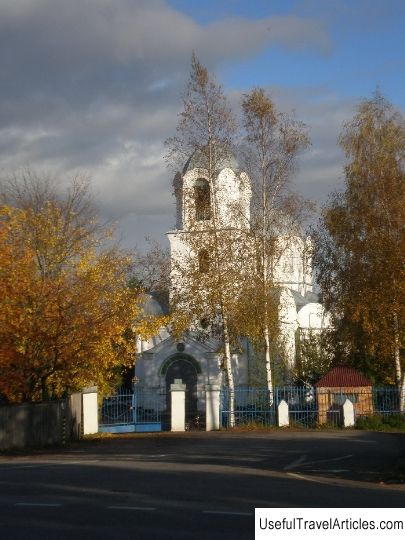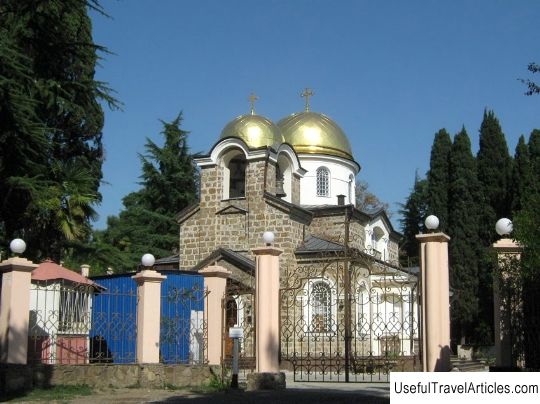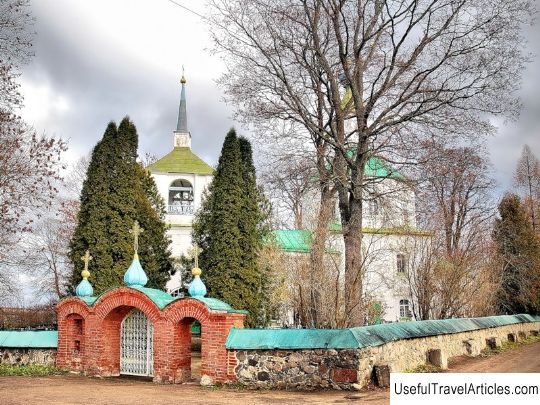Church of the Transfiguration of the Savior in Pribuzh description and photos - Russia - North-West: Pskov region
Rating: 8,2/10 (876 votes) 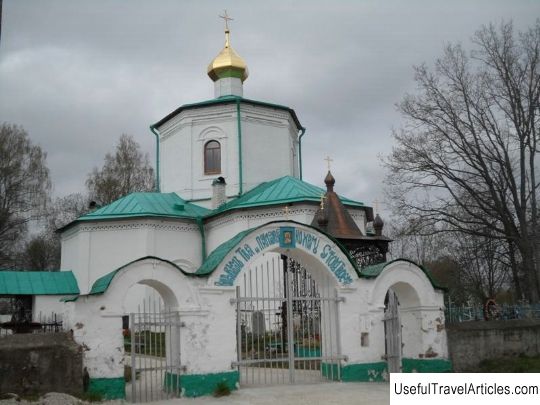
Church of the Transfiguration of the Savior in Pribuzh description and photos - Russia - North-West: Pskov region. Detailed information about the attraction. Description, photos and a map showing the nearest significant objects. Photo and descriptionThe Church of the Transfiguration of the Savior is located on the Pribuzh churchyard of the Gdov region. On a hill near the road, in the shade of old trees, this temple rises. The style of construction belongs to the early 15th century, to the so-called "Naryshkin architecture". The first mention of the church dates back to 1628. It is known that a surveyor from Gdov drew up a plan of the temple and designed the facade. This first temple was made of wood. The building, which has survived to this day, was built later, of stone. It is also known from the documents that on June 28, 1753, Colonel Stepanov petitioned Empress Elizaveta Petrovna to build a new temple on the site of the ancient temple, which was built by his father, Semyon Khvostov, using state funds ... Thus, a new state-owned stone church was built in the second half of the 18th century. On October 7, 1755, the abbot of the Cheremenets monastery, Joel, consecrated it in the presence of Empress Elizaveta Petrovna and Archbishop Stephen of Novgorod and Velikie Luki. After that, a cross was erected, on which there was an inscription testifying to this event. Unfortunately, this cross has not reached our time. In 1778, Metropolitan Gabriel consecrated the antimension. The type of construction of the new stone church is "octagon on a quadruple". The temple is biaxially symmetric, single-domed, single-altar. Now it bears the name of the Transfiguration of the Lord. A bell tower was built near the temple. Previously, she looked different. The fact is that the belfry was half dismantled, and a flat tent with a spire was placed instead of the top. Today's bell tower consists of two octal tiers and stands on a fourfold on the north side of the temple. Windows were laid at the base of the bell tower quadrangle. In the place where it now stands, the Holy Trinity stone church was previously located. It was damaged by fire in 1821. The entrance to the temple is located on the side, on the south side. Its architectural structure has an octal shape with a petal base. Externally, the temple has practically no decor. Thanks to its shape, it retains the clarity and simplicity of the lines that emphasize its austere image. The composition has a finished look and does not require any special decoration. On the outside, the lintels are decorated with niches. There are practically no decorations on the platbands. Frescoes have been preserved in the temple. The original iconostasis has also largely survived, but it has been partially restored. The icon painter of the Vyskat volost, Andrei Savinov, was engaged in the restoration of the iconostasis. The royal doors and columns of the first tier were made of wood. Particular attention is drawn to the icon of the Transfiguration, which, most likely, was transferred from an ancient wooden church, since it does not correspond to the size of the current iconostasis. There is also a bronze chandelier. The floors inside the temple were wooden. The brick walls were covered with plaster and whitewashed. The covering of the roof of the temple and the bell tower, as well as the drum and the head, are made of tin. In 1860, under the leadership of the architect Lorenz, restoration work was carried out on the facades of the building. In 1861 the building of the temple was insulated. Funds for the construction work were donated by Prince Saltykov. The outer walls of the temple were previously brick, and from the beginning of the 20th century, the facades were whitewashed. From April 1960 to August 2008, for almost 50 years, the elder, Archimandrite Leo (Dmitrochenko) was the rector of the temple. Parishioners from many cities of Russia came to him for advice. There are cases when healings took place through his prayers. Archimandrite Leo had many awards. He had the right to conduct a service with the Royal Doors open during church services.   We also recommend reading Museum of Modern Art (Museo de Arte Moderno) description and photos - Colombia: Bogota Topic: Church of the Transfiguration of the Savior in Pribuzh description and photos - Russia - North-West: Pskov region. |
